Last updated: March 15, 2018
History Exhibition Room 1 displays historical materials from Inagi's primitive ancient times to the Edo period.
| Exhibition theme | era etc. | Exhibition Contents | |
|---|---|---|---|
| 1 | The historical stage of Inagi | Terrain and natural environment | Overview of Inagi's topography and natural environment |
| 2 | Culture in red clay | paleolithic age | Paleolithic ruins and culture, excavated stone tools |
| 3 | People who lived in the Tama Hills | Jomon Period | Jomon period ruins and culture, earthenware and stone tools |
| 4 | Expansion of rice cultivation culture | Yayoi and Kofun period | Yayoi period ruins and culture, side cave tombs, etc. |
| 5 | Musashi Kokubunji and Kawarayato kiln ruins | Nara and Heian Periods | Musashi Kokubunji and Kawarayato kiln ruins |
| 6 | Engishikinaisha and ancient Buddhist statues | Heian period | Inagi's Engishikinaisha Shrine and ancient Buddhist statues |
| 7 | The activities of samurai and medieval mountain castles | Kamakura/Muromachi period | The activities of samurai and medieval mountain castles in the city |
| 8 | Faith and culture of medieval Inagi | Kamakura/Muromachi period | Distribution of stone tablets and medieval religious sites |
| 9 | The Edo Shogunate and the Villages of Inagi | Edo Period | Inagi Rokukamura during the Edo period |
| 10 | Daimaru Canal and New Rice Field Development | Edo Period | Daimaru Canal Water and New Field Development in the Edo Period |
| 11 | Development of early modern regional culture | Edo Period | Edo period paintings, pottery, Buddhist statues, stone Buddhas, etc. |
| 12 | Political situation in the late Edo period | Edo Period | Maintaining order in villages, political situation, etc. |
History exhibition room 1
Inagi's topography consists of the Tama Hills and the flat land along the Tama River, which manyo poets wrote about as ``Tama's Yokoyama.'' We will take a look at the topography and natural environment that served as the setting for Inagi's history using photo panels and topographical maps.
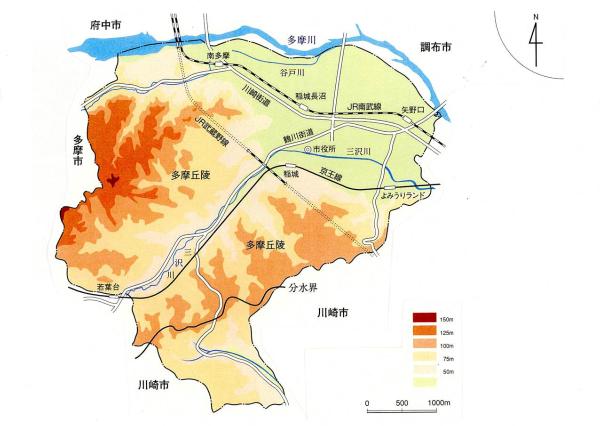
Topography of Inagi
The museum exhibits pottery, stone tools, and other tools found during excavations at the ruins, and provides an introduction to how the people who lived in Inagi lived. The remains of the tools and houses used by primitive people can sometimes be found in the soil, allowing us to see what life was like at that time.

Earthenware from the Jomon period (Tama New Town No.471 Ruins)
Life in the Jomon period (provided by Tokyo Metropolitan Buried Culture Center)
During the Yayoi period, rice cultivation became widespread and the use of bronze and iron tools began. Remains of residences and graves from this period have been discovered at the Hiraodaihara ruins, indicating that there was a large-scale settlement from the Yayoi period to the Kofun period. Earthenware and bronze vessels discovered during excavations are on display.

Earthenware from the Yayoi period
Ruins of houses from the Kofun period
In the Nara period, the land of Inagi belonged to Tama District, Musashi Province. In Daimaru, a kiln was built to fire tiles for Musashi Kokubunji Temple. We display tiles that were actually fired in Daimaru's kilns and a full-scale model of the kiln. In the Heian period, an ancient shrine called Engishiki Naisha was built, along with Anazawa Tenjinja Shrine, Aoijinja Shrine, and Marijutsuno Mameno Shrine. This marks the beginning of the history of Tenjin Shrine.
In addition, Buddhist culture spread to the region, and Buddhist statues from this period remain at Jorakuji Temple and Koshoji Temple.
Large model of tile kiln
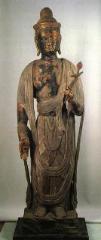
Koshoji Temple Wooden standing statue of Kannon Bodhisattva
During the Kamakura period, many samurai groups were clustered in the Kanto region. The area around Inagi was ruled by Inage Saburo Shigenari of the Chichibu Party Oyamada Clan. Ozawa Castle, Omaru Castle, and Naganuma Castle were built in the city as mountain castles from this period. Photo panels and measured drawings of the mountain castles are on display.

Distant view of Ozawa Castle ruins
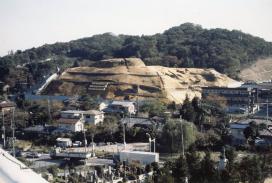
Excavated ruins of Omaru Castle
One of the representative stone structures from the Middle Ages is the Itabi (stone monument). Itabi is a memorial tower built to pray for the souls of the deceased and for their comfort in the afterlife. In Inagi, they are scattered along old settlements and old roads. Additionally, Nyujozuka and Jusanzuka in Hirao are sites of religious worship from the Middle Ages. Items excavated from the Nyujozuka excavation are on display.

Myokakuji-no-Itabi (Myokakuji no Itabi)
Copper coins excavated from Nyujozuka in Hirao
In the Edo period, the framework of six villages became established in the Inagi region. The six villages are Naganuma Village, Yanoguchi Village, Omaru Village, Momo Village, Sakahama Village, and Hirao Village. In the village, the three village leaders (nanushi), kumigashira (head of the village), and hyakushodai (head of the village) were in charge of village administration. We will take a look at the life of the Edo period through ancient documents written during the Edo period.
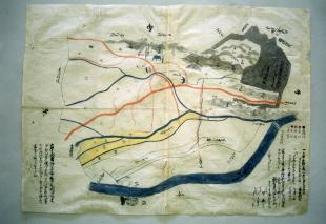
Map of Daimaru Village
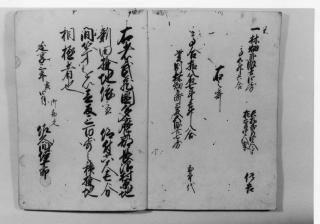
Naganuma village land survey book
Daimaru Yosui is an agricultural water source built during the Edo period. Water was brought in from the Tama River in Daimaru Village to water rice fields in nine downstream villages. In the villages that use the water, water associations were formed and jointly managed and operated the water. Related ancient documents and waterway maps of irrigation water are on display. Also, from the middle of the Edo period, new field development was promoted with the aim of increasing annual tax revenue.
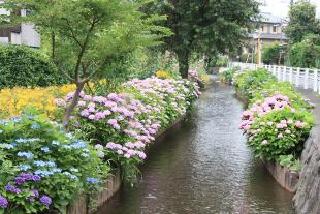
Daimaru water canal
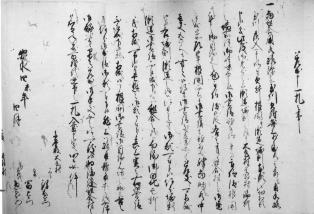
Old documents related to the construction of Daimaru Canal Water
We will look at regional culture through paintings, pottery, Buddhist statues, and stonework created during the Edo period. The pottery called Tamagawayaki fired in Sakahama Village was made from the late Edo period to the Meiji period, and was also sold in the Edo area. We will introduce the local culture of the time through photo panels and stone models.
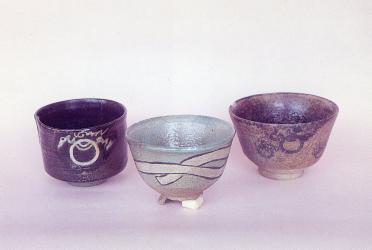
Tamagawa ware tea bowl
Model of Koshin Tower from the Edo period
Inagi City Education Department Lifelong Learning Division Tel: 042-377-2121